Buck Stove Model 21NC Wood Stove Review
- August 17, 2023
- 2 comment
For those who relish the idea of cozy evenings by a fire, the search for the perfect wood stove can be a delightful yet daunting task. After having spent considerable time researching and using different models, I’ve turned my attention to the Buck Stove Model 21NC. Here’s a comprehensive review, examining the buck stoves insert from a genuine user’s perspective.
Delving into Buck Stove’s History
Buck Stove is more than just a brand; it’s an embodiment of American craftsmanship. Since the 1970s, they’ve been synonymous with unparalleled quality and workmanship in the world of wood stoves. Their commitment to producing reliable and durable products is evident in the Model 21NC.
Performance Metrics Unraveled
- Heating Capacity
Heating Capacity refers to the area or volume of space that a wood stove can effectively heat. In this case, the Model 21NC is designed to heat spaces of up to 1,800 square feet. This metric is important because it helps users determine whether the stove is suitable for their specific heating needs. Wood stoves with larger heating capacities are better suited for larger rooms or open floor plans, while smaller heating capacities are appropriate for smaller spaces. - Efficiency: Efficiency refers to the stove’s ability to convert the energy stored in the wood into heat that is effectively radiated into the room. An efficiency rate of over 80% means that the stove is highly effective at extracting heat from the burning wood. This is important because higher efficiency leads to longer burn times and reduced fuel consumption. It indicates that less energy (wood) is wasted as unused heat, making the stove more cost-effective and environmentally friendly.
- Emissions: Emissions refer to the particles and gases released into the air as a result of burning wood on the stove. The emission rate of 1.7 grams per hour indicates the amount of particulate matter (small particles) released into the environment during the stove’s operation. A lower emission rate is desirable because it signifies that the stove burns wood more cleanly and produces fewer pollutants. This is beneficial for both indoor air quality and outdoor air quality, as it reduces the stove’s impact on the environment and helps to lower the overall carbon footprint.
Personal Experience
Ever since I moved into my mountain cabin, the nights, even in summer, have a chill that seeps into the bones. It became clear to me that I needed a reliable heat source. After much research, I settled on the Buck Stove Model 21NC.

First Impressions: The moment it was installed, I was struck by its compact design. The 21NC fit snugly into a corner of my living room, seamlessly blending with the room’s rustic decor. The matte black finish gave it a timeless look, and the glass door at the front was a portal to the comforting fires I would soon enjoy.
Daily Operations: Lighting it up was straightforward. The adjustable settings were user-friendly, and I found myself often peeking through the glass door, watching the flames dance and logs crackle. The heat it generated was robust and consistent, radiating warmth throughout the cabin. I loved returning home from a long hike to light up the stove, reading a book by its side with a warm mug of cocoa.
Maintenance: One aspect I appreciated was its low maintenance. Cleaning was minimal, mostly involving removing ash, which the 21NC made a hassle-free process. I did make it a routine to check the seals and the state of the wood I was using, ensuring everything was optimal.
Moments of Delight: During colder nights, the 21NC became more than just a heat source. It was the heart of my cabin. Friends and family would gather around, and we’d share stories, the stove’s gentle warmth wrapping around us like a comforting blanket. On one memorable snowy evening, the power went out. But with the Buck Stove Model 21NC glowing, the cabin felt cozy, and the evening turned into a night of board games and deep conversations by the stove.
Safety: Having a curious cat, I was initially concerned about safety. But the stove’s exterior, while warm to the touch, was never scorching. And the door latch ensured my feline friend couldn’t pry it open.
In the time I’ve had the Buck Stove Model 21NC, it’s become an integral part of my mountain living experience. Not only is it a reliable heat source, but it’s also a centerpiece of many cherished memories.
A Comparative Analysis
When looking to make a decision, particularly in the context of products, understanding the nuances and comparing different models can be crucial. Different households or settings have different requirements, making it essential to have a range of options available.
Hearthstone Heritage
Soapstone Structure: The Hearthstone Heritage is made primarily of soapstone. Soapstone, a type of metamorphic rock, has unique properties that allow it to absorb and hold heat for extended periods. This means once the stove heats up, it will continue to radiate warmth for a longer time, even after the fire has dwindled or been put out. This can be especially beneficial during colder nights or in situations where maintaining a fire continuously isn’t feasible.
Efficiency and Fuel Consumption: Efficiency in the context of stoves often refers to the ratio of fuel input to heat output. A less efficient stove will require more fuel (like wood) to produce the same amount of heat as a more efficient counterpart. The Hearthstone Heritage, despite its heat retention benefits, is noted to have a slightly lower efficiency. This means, that over time, users might observe that they’re using a bit more fuel than they would with a more efficient model.

Jøtul F 500
Expansive Heating Area: The standout feature of the Jøtul F 500 is its capability to heat larger spaces. This makes it suitable for bigger homes or areas that have more open space. Such stoves are often preferred in large living areas or houses with open floor plans, ensuring even heat distribution throughout the space.
Efficiency Comparison: The Jøtul F 500, similar to the Hearthstone Heritage, has a reduced efficiency when pitted against the Model 21NC. This might mean users could end up using more fuel over a given period, compared to the 21NC.

Pros and Cons
Pros:
- Installation: The 21NC offers flexibility. Its adaptable design allows for freestanding or insert installation, catering to varied aesthetic choices.
- Air Wash Feature: The incorporated air wash system keeps the ceramic glass window clear, allowing users to enjoy the flame’s ambiance without regular cleaning.
- Safety: Its secured combustion chamber ensures minimal smoke spillage, reducing health hazards.
Cons:
- Initial Investment: High quality often comes with a heftier price tag. While the Model 21NC is a premium product, potential buyers should consider its long-term benefits against the upfront cost.
- Weight: Weighing around 342 pounds, relocation or repositioning within the home might be challenging.
What Really Matters
Durability: Beyond performance, longevity is crucial. The Model 21NC, with its robust construction, ensures that it remains a household staple for years.
Aesthetic Appeal: A wood stove isn’t just a utility; it’s an aesthetic centerpiece. The Model 21NC, with its sleek design, complements various interior themes.
Concluding Thoughts

The Buck Stove Model 21NC effortlessly marries form and function. Its superior heating capabilities, combined with high efficiency and a commendable environmental consciousness, set it apart. While the price might be a deterrent for some, its long-term benefits—both in terms of performance and savings on fuel—render it a worthy investment for those seeking quality and reliability. In the world of wood stoves, the Model 21NC stands as a beacon of excellence.
General Steps for Installing a Wood Stove:
- Choose an Appropriate Location:
- Ensure enough clearance from combustibles. There should be adequate space around the stove to avoid potential fire hazards.
- Consider placing the stove centrally in your home for even heat distribution.
- Prepare a Safe Base:
- Most stoves require a non-combustible base or hearth pad. Ensure it’s larger than the stove and meets the manufacturer’s thickness recommendations.
- Ensure Proper Venting:
- Decide between a single-wall or double-wall stovepipe. A double-wall pipe offers better insulation and requires less clearance.
- Ensure the stovepipe diameter matches the stove’s outlet.
- Ensure the stovepipe extends to the required height above the roof for optimal draft and to prevent creosote buildup.
- Install a Chimney:
- If your home doesn’t have an existing chimney, you’ll need a manufactured class A insulated chimney.
- If using an existing masonry chimney, ensure it’s lined and meets the stove’s venting requirements.
- Secure the Stovepipe:
- Attach the stovepipe to the stove’s flue collar.
- Secure all joints with heat-resistant screws and avoid any 90-degree bends.
- Ensure Proper Air Intake:
- Some models might require an external air source for combustion. Ensure proper setups if required.
- Install a Damper (if not pre-installed):
- A damper helps control the stove’s burn rate. Follow the manufacturer’s guidelines if you need to install one.
- Test the Installation:
- Before regular use, light a small fire to test the draft and check for any leaks or issues.
- Safety First:
- Install smoke alarms and carbon monoxide detectors in your home.
- Always have a fire extinguisher nearby.
Frequently Asked Questions
- Can I use the Buck Stove Model 21NC in a mobile home?
While the Buck Stove Model 21NC is designed to be efficient and safe, it is crucial to consult local regulations and guidelines before installing it in a mobile home. Due to the specific requirements for mobile home heating appliances, it’s important to ensure compliance and safety. - What is the recommended clearance around the Buck Stove Model 21NC? |
The recommended clearance for the Buck Stove Model 21NC varies depending on the specific installation and the type of wall or combustible material. Generally, you should follow the manufacturer’s guidelines and local building codes. The stove’s manual will provide detailed information on the required clearances. - Is the Buck Stove Model 21NC eligible for government incentives or rebates?
Some regions offer incentives, rebates, or tax credits for using energy-efficient heating appliances like wood stoves. Check with local authorities or energy agencies to determine if the Buck Stove Model 21NC qualifies for any such programs in your area. - Can the Buck Stove Model 21NC be used for cooking or heating food?
The primary purpose of the Buck Stove Model 21NC is to provide space heating. While some wood stoves have a cooking surface, it’s important to note that the Model 21NC is not designed specifically for cooking, and attempting to do so might affect its efficiency and safety. - What type of wood is best for burning in the Buck Stove Model 21NC?
Hardwoods like oak, maple, and hickory are generally recommended for burning in wood stoves due to their high energy content and cleaner combustion. Avoid burning treated or painted wood, as it can release harmful chemicals into the air. - Can the Buck Stove Model 21NC be used as the primary heat source for an entire home?
The Buck Stove Model 21NC can effectively heat a significant portion of a home, but its capacity will depend on factors like the size of the house, insulation, layout, and local climate. It’s important to properly size the stove for your heating needs and consider whether it will be the sole heat source or supplemented by other heating methods. - How often should I clean the chimney and flue when using the Buck Stove Model 21NC?
Regular chimney and flue cleaning is essential for maintaining proper ventilation and preventing creosote buildup, which can lead to chimney fires. The frequency of cleaning depends on usage; however, it’s recommended to have a professional inspect and clean the chimney at least once a year. - Is the Buck Stove Model 21NC compatible with a blower or fan attachment?
Yes, the Buck Stove Model 21NC often has options for a blower or fan attachment that helps distribute heat more effectively throughout the room. This can enhance the stove’s efficiency by ensuring heat is circulated evenly.
Your input matters to us! Feel free to discuss your firsthand encounters and opinions regarding the Buck Stove Model 21NC in the space provided below. Your unique insights might just guide fellow users in making well-informed choices!

Reagan Key
Forestry Author2 comments
Great review! I'm getting ready to purchase a used Buck Stove 21NC and found this review helpful and comforting. Thanks.


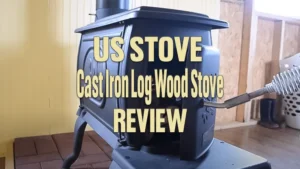
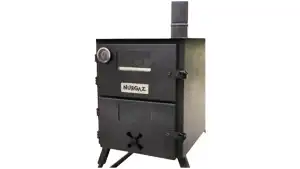

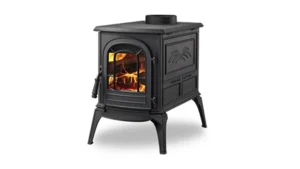


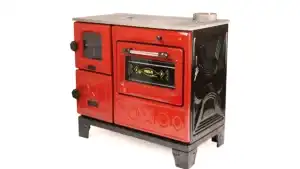
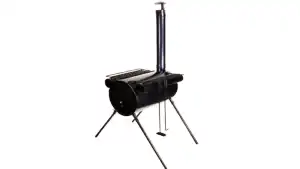


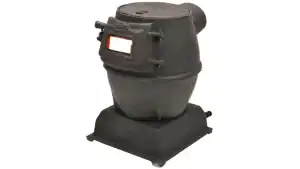
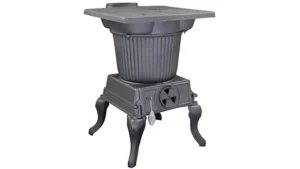
bought the smaller insert supposed to heat up to 1800 square feet after using it for two weeks not happy, I do not believe it will heat 400 square feet. after burning all day it raised my living room 2 degrees and it was only 60 degrees out side burning dried oak with moisture content of 6
Michael T Betzler
February 19, 2024 3:29 pm